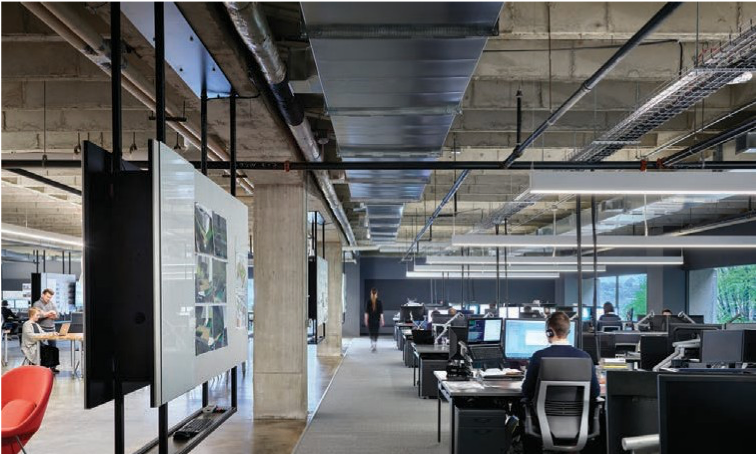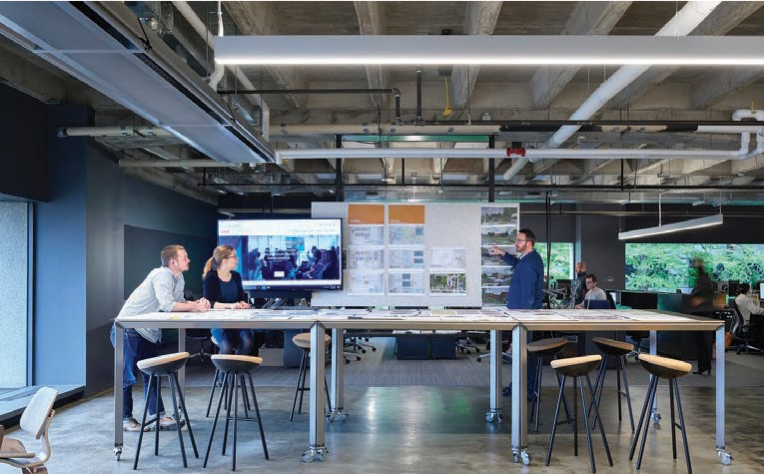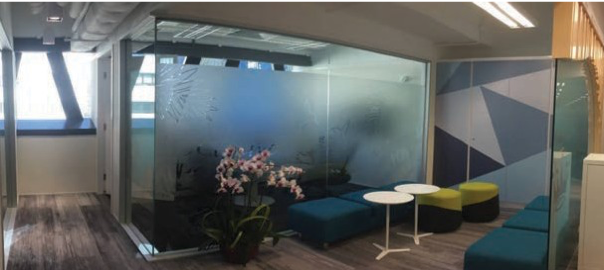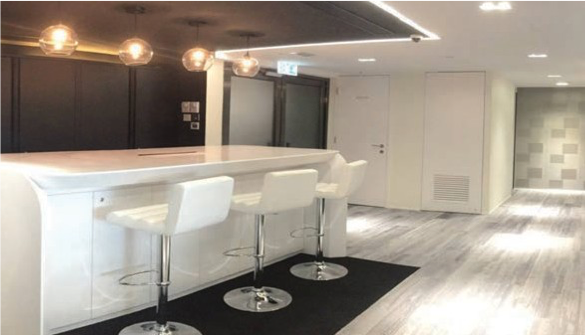Hallmark is Maximizing Efficiency by Designing Office Spaces With the Environment in Mind
In 2017, Hallmark and its businesses made several moves that met its goals of creating work spaces that foster employee productivity while being as energy-efficient and environmentally friendly as possible.
Crown Center
After Hallmark employees in Kansas City consolidated into one building, Crown Center attracted two major tenants in 2017 to lease vacated space in other office buildings on the 85-acre campus: BNIM architects and Crestwood Equity Partners.
“We wanted to attract new tenants to these 1970s-era buildings that would help improve the infrastructure of our office space,” said Nathan Guffey, vice president, corporate facilities and real estate, Crown Center.
“For BNIM, one of the draws of Crown Center is the historical significance of our architecture and our long-standing commitment to reducing energy, waste and water consumption.”
Both tenants upgraded and modernized their office spaces. They opted for open floor plans that allow for higher density of employees with more spaces for collaboration, LED lighting with automated controls to save energy costs and low-flow plumbing to reduce water use. BNIM also repurposed old doors from a different office building as design elements in their new space.
Hallmark
After moving employee offices from Crown Center buildings, Hallmark cleaned and reinstalled the carpet in its main headquarters facility instead of sending it to the landfill, saving $130,000 and reducing waste for the environment.
“We’re continually looking for ways to reuse, repurpose and recycle office furnishings,” Guffey explained. “It makes sense financially and environmentally.”
In November 2017, Hallmark also opened a new fitness center, with its exposed ceilings saving on building materials and new LED lighting yielding a 60 percent reduction in energy use in its first four months of operation.
Hong Kong
When a mass transit station opened near the Hallmark Hong Kong offices, it was a positive sign for the area, but also an indication that rent costs would increase. In September 2017, the 155-person Hong Kong team moved their offices into a refurbished industrial building. The planning team focused on making energy-efficient choices for lighting, air conditioning and office design.
“Going into a revitalized area and renovating an existing building has a better environmental impact than new construction,” said Dave Saunders, managing director, global procurement and Asia-Pacific.
“We made decisions to help save energy and reduce the environ- mental footprint.”
To maintain the industrial feel of the building, they left the ceiling open, used as much glass as possible for walls, installed LED lighting and took advantage of natural light.
“To reduce our energy consumption, we split the office into five zones with timers to have more control over the LED lights and the air condition- ing system throughout the day,” said Maggie Lam, finance and business operation services director.
The new office space is 20 percent smaller than the previous location, but they have made more efficient use of space by lowering partition walls, reducing desk and storage space and creating more areas for employees to collaborate.
“In our revitalized industrial building, we have lower rent and a lot of flexibility to make a better working environment,” Lam said. “We use office plants to improve air quality and have implemented a recycling program as well.”
Learn more about Hallmark's commitment to green infrastructure in the full 2017 Caring In Action Report.






